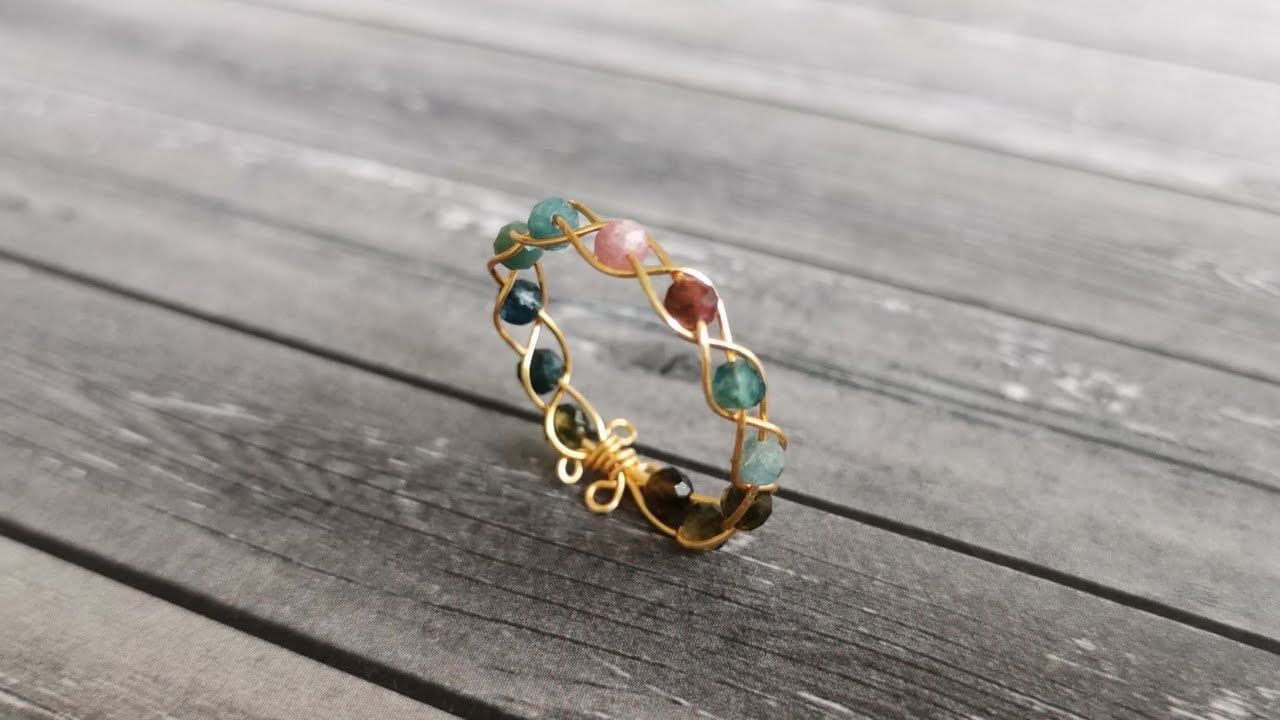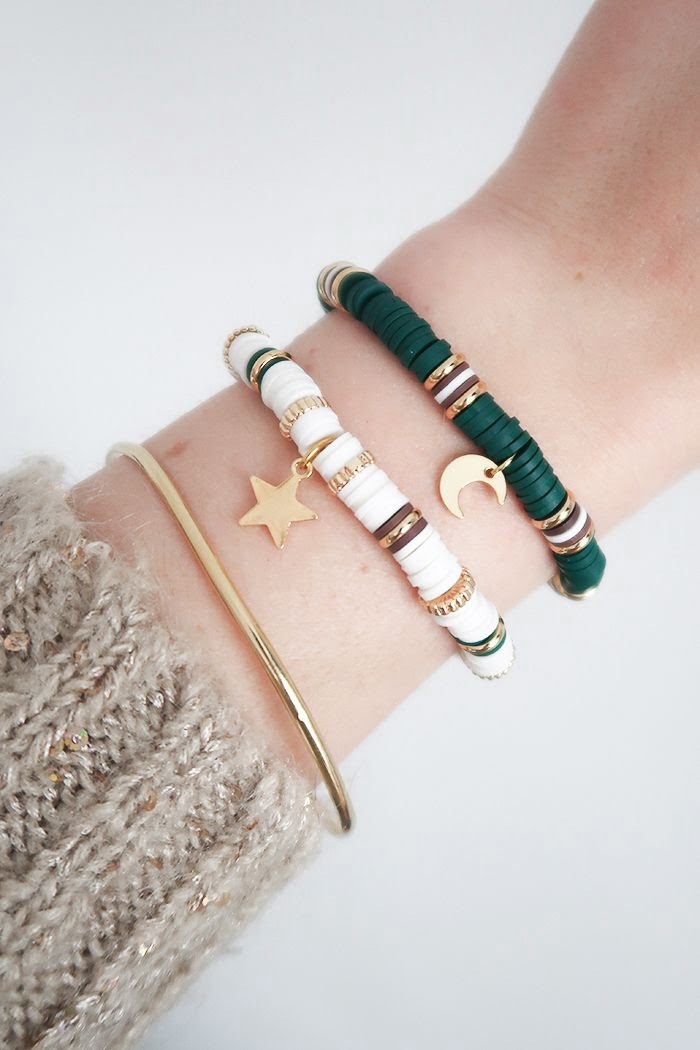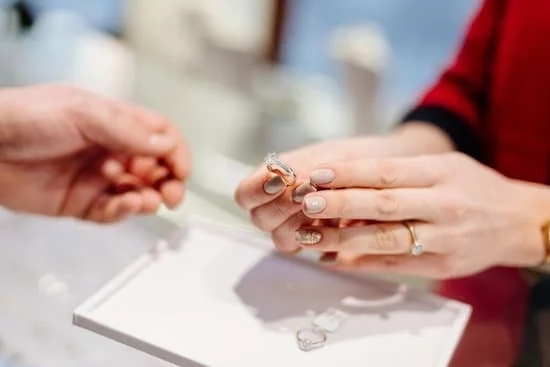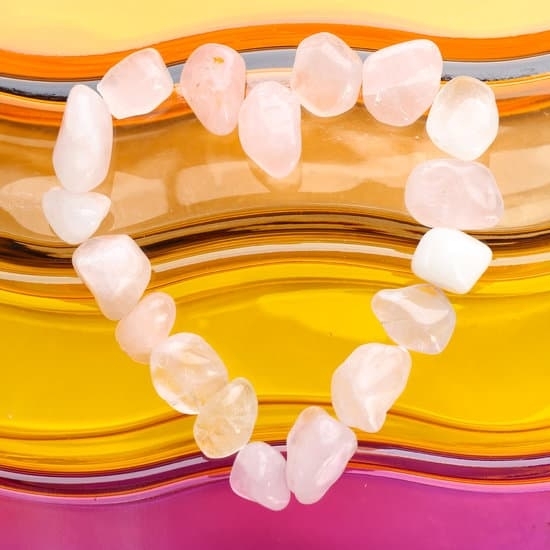Sterling silver jewelry is prized for its beauty and elegance, but over time, it can become tarnished and lose its shine. Many people wonder if they can use jewelry cleaner to restore the brilliance of their sterling silver pieces. In this article, we will delve into the compatibility of jewelry cleaner with sterling silver and explore the best practices for cleaning and maintaining your precious jewelry.
Before we dive into the specifics, it’s important to understand why sterling silver requires special care. Unlike other metals, sterling silver is an alloy composed of 92.5% pure silver and 7.5% other metals, usually copper. This composition gives sterling silver its unique strength and durability, but it also makes it more prone to tarnishing.
Not all jewelry cleaners are created equal, and not all are safe for use on sterling silver. In this article, we will discuss the different types of jewelry cleaners available in the market and identify which ones are suitable for cleaning sterling silver without causing damage. We will also examine common ingredients found in jewelry cleaners and how they may affect the delicate surface of sterling silver.
By understanding the compatibility of jewelry cleaner with sterling silver and following proper cleaning techniques, you can restore your cherished pieces to their original beauty and prolong their longevity. So let’s dive in and explore how you can safely clean your sterling silver jewelry using jewelry cleaner.
Understanding the Properties of Sterling Silver
Sterling silver is a popular choice for jewelry due to its beautiful luster and durability. However, it does require special care to maintain its shine and prevent tarnishing. Understanding the properties of sterling silver can help us better comprehend why it needs unique cleaning methods.
What is Sterling Silver?
Sterling silver is an alloy made up of 92.5% pure silver and 7.5% other metals, typically copper. The addition of these metals provides strength and durability to the silver, making it suitable for crafting jewelry. Pure silver alone is too soft to be practical for everyday wear. The 7.5% alloy ensures that the piece maintains its shape and structure while preserving the beauty of the silver.
The Tarnishing Process
One of the significant challenges in caring for sterling silver is its tendency to tarnish over time. When exposed to air, humidity, or certain chemicals, a chemical reaction occurs between the metal alloys and sulfur compounds in the environment. This reaction forms a black or yellowish layer called tarnish on the surface of sterling silver jewelry.
Why Does Sterling Silver Require Special Care?
Unlike other materials like gold or platinum that are resistant to tarnish, sterling silver needs specific attention due to its composition. The presence of copper makes it more susceptible to tarnishing than pure silver or other precious metals. Therefore, using regular jewelry cleaners that are not formulated for sterling silver can potentially damage or strip away some of the metal’s outer layers, leading to discoloration or pitting.
Types of Jewelry Cleaners
Sterling silver jewelry is known for its beautiful shine and elegance. However, it also requires careful maintenance to keep it looking its best. One important aspect of caring for sterling silver is knowing which types of jewelry cleaners are safe to use on this particular metal. In this section, we will explore different types of jewelry cleaners and identify which ones are suitable for cleaning sterling silver.
When it comes to choosing a jewelry cleaner for your sterling silver pieces, it is crucial to avoid harsh chemicals that can cause damage or discoloration. Some common types of jewelry cleaners include liquid solutions, creams, wipes, and polishing cloths. It’s essential to select a cleaner specifically designed for use on sterling silver.
One popular type of jewelry cleaner that is generally safe for sterling silver is a mild dish soap and water solution. This gentle mixture can effectively remove dirt and debris without causing any harm or tarnish to the metal. Additionally, there are specialized jewelry cleaning solutions available on the market that are specifically formulated for sterling silver. These products often come with instructions on how to use them safely on your jewelry pieces.
| Jewelry Cleaner | Suitable for Sterling Silver? |
|---|---|
| Mild dish soap and water solution | Yes |
| Specialized sterling silver cleaning solution | Yes |
| Ammonia-based cleaners | No |
| Bleach or chlorine-based cleaners | No |
Examining Common Ingredients in Jewelry Cleaners
When it comes to cleaning sterling silver jewelry, it’s important to understand the common ingredients found in jewelry cleaners and their effects on sterling silver. The compatibility of these ingredients with sterling silver can determine whether or not they are safe to use on your precious pieces.
One common ingredient found in many jewelry cleaners is ammonia. While ammonia can be effective at removing dirt and grime from sterling silver, it can also cause damage if used incorrectly.
Ammonia is known for its strong chemical properties, which can strip away the patina and oxidization that gives sterling silver its unique look. It’s crucial to follow the instructions provided by the manufacturer when using an ammonia-based jewelry cleaner to ensure you don’t inadvertently harm your sterling silver jewelry.
Another ingredient often found in jewelry cleaners is alcohol. Alcohol-based cleaners are generally safe to use on sterling silver as they are less harsh and abrasive compared to other chemicals. However, it’s still important to exercise caution when using alcohol-based cleaners, especially on delicate or intricate pieces of jewelry. Always read the labels carefully and perform a patch test on a small area of your piece before applying it more extensively.
Baking soda is another common household ingredient that can be used to clean sterling silver. This natural solution is gentle yet effective at removing tarnish from silver without causing any damage.
To use baking soda as a cleaner, mix it with a little bit of water to form a paste, then apply it to your tarnished piece with a soft cloth or sponge. Gently rub the paste onto the surface of the silver, then rinse thoroughly with warm water and dry with a clean cloth.
Step-by-Step Guide
Gather the Necessary Materials
Before you begin cleaning your sterling silver jewelry, it’s important to gather all the necessary materials. This will ensure that you have everything you need for a successful cleaning process. Here are some of the materials you will need:
- Jewelry cleaner: Look for a jewelry cleaner that is specifically formulated for use on sterling silver. Avoid cleaners that contain harsh chemicals or abrasive ingredients.
- Soft-bristle brush: A soft-bristle brush, such as a toothbrush or a specialized jewelry brush, will help gently remove dirt and grime from your silver jewelry.
- Soft, lint-free cloth: Use a soft cloth to dry and polish your sterling silver after cleaning. Avoid using paper towels or fabrics that may scratch the surface of your jewelry.
Follow These Steps for Cleaning Sterling Silver
Now that you have all the necessary materials, follow these step-by-step instructions to safely clean your sterling silver jewelry with jewelry cleaner:
- Read the instructions: Before using any type of jewelry cleaner, carefully read and follow the instructions provided by the manufacturer. This will ensure that you use the product correctly and avoid any potential damage to your jewelry.
- Prepare the cleaning solution: If your jewelry cleaner requires dilution, mix it with water according to the manufacturer’s instructions. Make sure to use warm water rather than hot water, as hot water can potentially damage your sterling silver.
- Soak the jewelry: Place your sterling silver pieces into the cleaning solution and let them soak for a few minutes. This will help loosen any dirt or residue on the surface of your jewelry.
- Gently scrub: After soaking, take a soft-bristle brush and gently scrub your sterling silver pieces. Pay special attention to areas where dirt and grime may accumulate, such as crevices or detailed designs.
- Rinse thoroughly: Once you have finished scrubbing, rinse your jewelry thoroughly with warm water. Make sure to remove all traces of the cleaning solution to avoid any potential residue or discoloration.
- Dry and polish: After rinsing, use a soft, lint-free cloth to dry your sterling silver jewelry. Gently pat each piece until they are completely dry. Then, use the same cloth to polish your jewelry and restore its shine.
By following these step-by-step instructions, you can safely clean your sterling silver jewelry using a jewelry cleaner specifically formulated for this type of metal. Remember to always read and follow the instructions provided by the manufacturer to ensure the best results without causing any damage to your precious pieces.
Alternative Cleaning Methods for Sterling Silver
Sterling silver jewelry is a beautiful and precious item that requires proper care and maintenance to preserve its shine and luster. While commercial jewelry cleaners can be effective, some individuals prefer to use natural and DIY solutions for cleaning their sterling silver pieces. In this section, we will explore some alternative cleaning methods that you can try at home.
One of the most popular natural solutions for cleaning sterling silver is using a mixture of baking soda and water. This mild abrasive paste can help remove tarnish and restore the shine to your jewelry. To use this method, simply create a paste by mixing baking soda with a small amount of water until it forms a thick consistency.
Gently rub the paste onto the surface of your silver jewelry using a soft cloth or sponge. Rinse with warm water and buff dry with a clean cloth.
Another DIY solution for cleaning sterling silver is using white vinegar. The acidity in vinegar can help break down tarnish on your jewelry. To use this method, create a mixture of one part white vinegar to two parts water. Soak your silver jewelry in the mixture for 2-3 hours, then remove and rinse with water. Buff dry with a soft cloth to remove any remaining residue.
In addition to these natural solutions, there are also several DIY methods that involve household items such as toothpaste, lemon juice, or even aluminum foil. These methods may vary in effectiveness depending on the specific piece of jewelry and level of tarnish present.
It’s important to note that while natural and DIY solutions can be effective in cleaning sterling silver, they may not always be suitable for all types of silver jewelry or intricate designs. It’s always best to test these methods on a small inconspicuous area before applying them to the entire piece.
Overall, alternative cleaning methods provide viable options for those who prefer using natural or homemade solutions for their sterling silver jewelry. Experimenting with these methods can help you find the one that works best for you and allows you to maintain the beauty of your sterling silver pieces for years to come.
| Alternative Cleaning Methods | Description |
|---|---|
| Baking Soda Paste | Mix baking soda with water to create a paste. Gently rub onto silver jewelry, rinse, and dry. |
| White Vinegar Solution | Soak silver jewelry in a mixture of vinegar and water, then rinse and dry. |
| Toothpaste or Lemon Juice | Apply toothpaste or lemon juice to a soft cloth, gently rub onto silver jewelry, rinse, and dry. |
Expert Tips
Sterling silver jewelry is a popular choice for its beauty and versatility. However, it requires special care to maintain its shine and luster over time. Using a jewelry cleaner can be an effective way to clean and restore the brilliance of your sterling silver pieces. In this section, we will explore some expert tips on how to clean sterling silver with jewelry cleaner while avoiding common mistakes.
Dos
- Choose a jewelry cleaner specifically formulated for use on sterling silver. Look for cleaners that are gentle, non-abrasive, and free of harsh chemicals.
- Read the instructions carefully before using the jewelry cleaner. Each cleaner may have specific guidelines on how long to soak the jewelry or how to rinse it off properly.
- Use a soft-bristle brush or a toothbrush with soft bristles to gently scrub away dirt and tarnish from your sterling silver jewelry.
- Rinse thoroughly with warm water after cleaning to remove any residue from the jewelry cleaner.
Don’ts
- Avoid using ultrasonic cleaners or steamers on your sterling silver jewelry, as these methods can be too harsh and potentially damage the metal.
- Do not use abrasive materials such as steel wool or rough cloths when cleaning sterling silver, as they can scratch the surface of the metal.
- Avoid exposing your sterling silver jewelry to harsh chemicals such as bleach, ammonia, or chlorine, as they can cause discoloration or damage.
- Avoid prolonged exposure to water when cleaning your sterling silver jewelry. While some moisture is necessary to facilitate the cleaning process, excessive exposure can lead to tarnishing.
By following these expert tips, you can safely clean your sterling silver jewelry using a suitable jewelry cleaner without causing any harm or damage. Remember that regular maintenance and proper care will help prolong the shine and beauty of your sterling silver pieces.
Storing and Maintaining Sterling Silver Jewelry
Sterling silver jewelry is not only beautiful but also a valuable investment. To ensure that your sterling silver pieces maintain their shine and luster for years to come, proper storage and maintenance are essential. Here are some strategies to help you protect your sterling silver jewelry:
- Keep it clean: Before storing your sterling silver jewelry, make sure it is clean to prevent tarnishing. Follow the step-by-step guide mentioned earlier in this article to safely clean your sterling silver using a suitable jewelry cleaner.
- Store it properly: Proper storage is crucial for maintaining the shine of your sterling silver jewelry. Ideally, store each piece separately in a soft cloth or a jewelry pouch to prevent scratching and tangling. Avoid leaving your jewelry exposed to air or light for extended periods as this can lead to oxidation and tarnishing.
- Avoid moisture and humidity: Moisture and humidity can accelerate the tarnishing process of sterling silver. To prevent this, store your jewelry in a dry place and consider using anti-tarnish strips or silica gel packets to absorb moisture.
- Minimize exposure to chemicals: Chemicals such as perfumes, lotions, hairsprays, and household cleaning products can dull the shine of sterling silver. It’s important to remove your silver jewelry before applying these substances or engaging in activities that involve direct contact with chemicals.
- Regularly wear your sterling silver: Surprisingly, regular wear can actually help maintain the shine of your sterling silver jewelry as it helps prevent tarnishing caused by exposure to air. However, avoid wearing it when engaging in activities that involve abrasion or potential damage.
By following these strategies for storing and maintaining your sterling silver jewelry, you can prolong its shine and luster while minimizing the need for extensive cleaning with jewelry cleaner. Remember that prevention is key when it comes to preserving the beauty of your precious pieces.
Preventative Measures
Sterling silver jewelry can be a beautiful and timeless addition to your collection, but it does require special care to ensure its longevity. While jewelry cleaners can effectively remove tarnish and restore shine, it’s important to minimize the need for cleaning by taking preventative measures. By following these tips, you can keep your sterling silver jewelry looking its best for years to come.
One of the most effective ways to minimize the need for jewelry cleaner on sterling silver is to store and wear your pieces properly. When not in use, store your sterling silver jewelry in a cool, dry place. Avoid storing them directly on top of one another or with other metals, as this can cause scratching. Using individual soft cloth pouches or compartments within a jewelry box can help prevent tarnish and scratches.
Additionally, removing your sterling silver jewelry before participating in activities where it may come into contact with harsh chemicals or excessive sweat can also help minimize the need for cleaning. Chemicals found in cleaning products, chlorine in swimming pools, and even certain perfumes and lotions can cause damage to sterling silver. It’s always best to remove your jewelry before engaging in these activities.
Another preventative measure you can take is regular cleaning maintenance. Wiping down your sterling silver jewelry after each use with a soft cloth will help remove any oils, dirt, or residue that may have accumulated throughout the day. This simple step can go a long way in keeping your jewelry looking shiny and clean.
Conclusion
In conclusion, it is possible to use jewelry cleaner on sterling silver, but it is important to understand the properties of sterling silver and choose the right type of cleaner. Sterling silver requires special care due to its composition and vulnerability to tarnish and damage. When selecting a jewelry cleaner, it is crucial to avoid cleaners that contain harsh chemicals or abrasive agents that can potentially harm the silver.
A step-by-step guide provided in this article offers a safe and effective method for cleaning sterling silver using jewelry cleaner. However, there are alternative cleaning methods available, such as natural and DIY solutions. These methods can be used as an alternative for those who prefer more environmentally friendly or cost-effective options.
To maintain the shine and luster of sterling silver jewelry, proper storage and maintenance are essential. Storing sterling silver in a dry place away from exposure to moisture and direct sunlight can help prevent tarnish. Additionally, avoiding contact with household chemicals, lotions, perfumes, and hairsprays can minimize the need for frequent cleaning.
In summary, finding the right balance between cleaning and preserving sterling silver jewelry is crucial. By understanding the properties of sterling silver, choosing safe cleaners or alternative cleaning methods, practicing proper storage and maintenance techniques, one can ensure that their sterling silver pieces remain beautiful for years to come. With regular care and attention, you can enjoy your sterling silver jewelry’s shine and luster while minimizing the need for excessive cleaning.
Frequently Asked Questions
What is the best cleaner for sterling silver?
When it comes to cleaning sterling silver, one of the best cleaners available is a mixture of mild dish soap and warm water. This solution is gentle enough to effectively remove dirt, grime, and tarnish from the surface of the silver without causing any damage or scratches. To clean your sterling silver items using this cleaner, simply create the mixture by adding a few drops of mild dish soap to a bowl of warm water.
Then, gently scrub the silver with a soft cloth or sponge soaked in the solution. Afterward, rinse the item thoroughly with clean water and dry it off completely.
What is safe to clean sterling silver with?
When cleaning sterling silver, it’s important to use products that are safe for this specific type of metal to avoid causing any harm or damage. Alongside the previously mentioned mild dish soap and warm water mixture, there are other safe options for cleaning sterling silver. One popular choice is baking soda paste made with baking soda and water.
This paste has gentle abrasive properties that can help remove tarnish while being safe on the silver surface. Additionally, many jewelry stores sell specialized silver cleaning solutions or polishing cloths that are specifically designed for sterling silver.
How do you clean sterling silver without damaging it?
Cleaning sterling silver without damaging it requires some precautionary measures and gentle cleaning techniques. First and foremost, always handle your silver items with care to avoid unnecessary scratches or dents. It’s crucial not to use any harsh chemical cleaners or abrasive materials like toothpaste or baking powder as they can scratch or wear down the silver surface over time.
Instead, opt for mild cleaners such as dish soap mixed with warm water or baking soda paste as mentioned earlier. Also, when cleaning, use soft cloths or sponges rather than brushes with rough bristles to prevent scratching the metal. Furthermore, after cleaning your sterling silver, make sure to completely dry it off using a soft cloth to prevent water spots from forming on its surface and store it in a dry place when not in use.

Welcome to my jewelry blog! My name is Sarah and I am the owner of this blog.
I love making jewelry and sharing my creations with others.
So whether you’re someone who loves wearing jewelry yourself or simply enjoys learning about it, be sure to check out my blog for insightful posts on everything related to this exciting topic!





